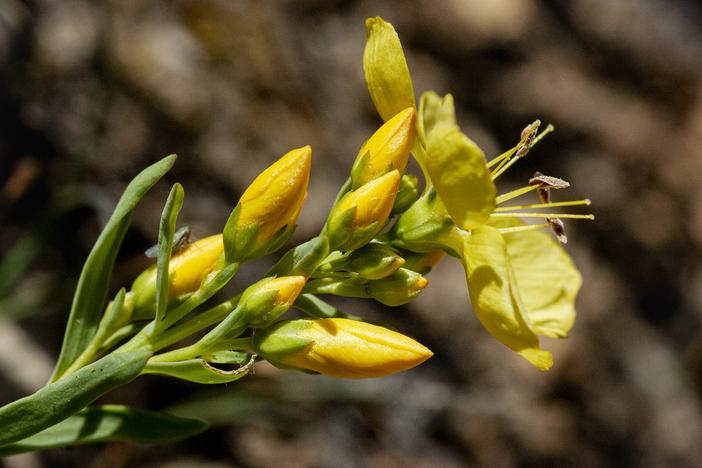King’s Flax
(Linum kingii)
King’s Flax (Linum kingii)
/
/

Cecelia Alexander
CC0 1.0
Image By:
Cecelia Alexander
Recorded By:
Copyright:
CC0 1.0
Copyright Notice:
Photo by: Cecelia Alexander | License Type: CC0 1.0 | License URL: https://creativecommons.org/publicdomain/zero/1.0/ | Uploader: aspidoscelis | Publisher: Flickr












































Estimated Native Range
Summary
Linum kingii, commonly known as King’s Flax, is an evergreen perennial subshrub or herb that is native to the high elevation meadows, rocky slopes, and subalpine zones of the Rocky Mountains in North America. It typically grows to a modest height and width of 0.7-1 feet (0.2-0.3 meters), forming a compact mound. King’s Flax is characterized by its narrow, linear leaves and its bright yellow flowers that bloom in the late spring and early summer, adding a splash of color to the garden. The flowers are modest in size but can be quite showy when the plant is massed.
King’s Flax is valued for its drought tolerance and its ability to thrive in poor, rocky soils, making it an excellent choice for rock gardens, xeriscaping, and naturalized areas. It is also used for its ornamental appeal in borders and as a ground cover. This plant requires minimal maintenance once established and is well-suited to gardens with full sun to partial shade exposure. While it prefers well-drained soils, it is adaptable to a range of soil types, provided they are not waterlogged.CC BY-SA 4.0
King’s Flax is valued for its drought tolerance and its ability to thrive in poor, rocky soils, making it an excellent choice for rock gardens, xeriscaping, and naturalized areas. It is also used for its ornamental appeal in borders and as a ground cover. This plant requires minimal maintenance once established and is well-suited to gardens with full sun to partial shade exposure. While it prefers well-drained soils, it is adaptable to a range of soil types, provided they are not waterlogged.CC BY-SA 4.0
Plant Description
- Plant Type: Subshrub, Herb
- Height: 0.7-1 feet
- Width: 0.7-1 feet
- Growth Rate: Moderate
- Flower Color: Yellow
- Flowering Season: Spring
- Leaf Retention: Evergreen
Growth Requirements
- Sun: Full Sun, Part Shade
- Water: Very Low, Low
- Drainage: Fast
Common Uses
Bee Garden, Bird Garden, Butterfly Garden, Deer Resistant, Drought Tolerant, Low Maintenance, Rabbit Resistant, Showy Flowers
Natural Habitat
Native to high elevation meadows, rocky slopes, and subalpine zones in the Rocky Mountains
Other Names
Common Names: King’s Yellow Flax
Scientific Names: , Linum kingii, Mesyniopsis kingii, Linum kingii var. sedoides, Linum kingii var. pinetorum, Cathartolinum kingii, Cathartolinum sedoides, Linum sedoides,
GBIF Accepted Name: Linum kingii S.Watson